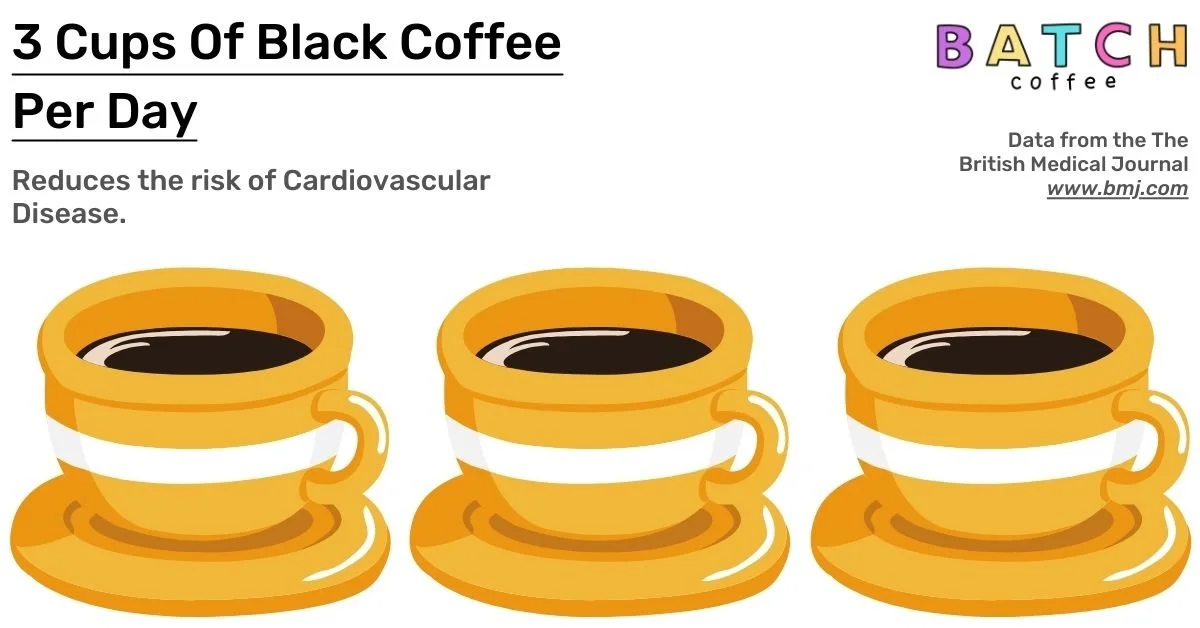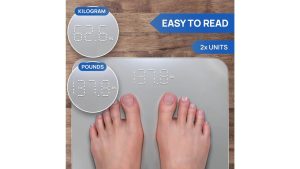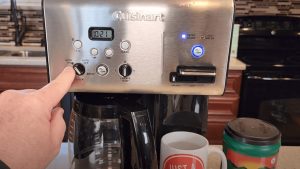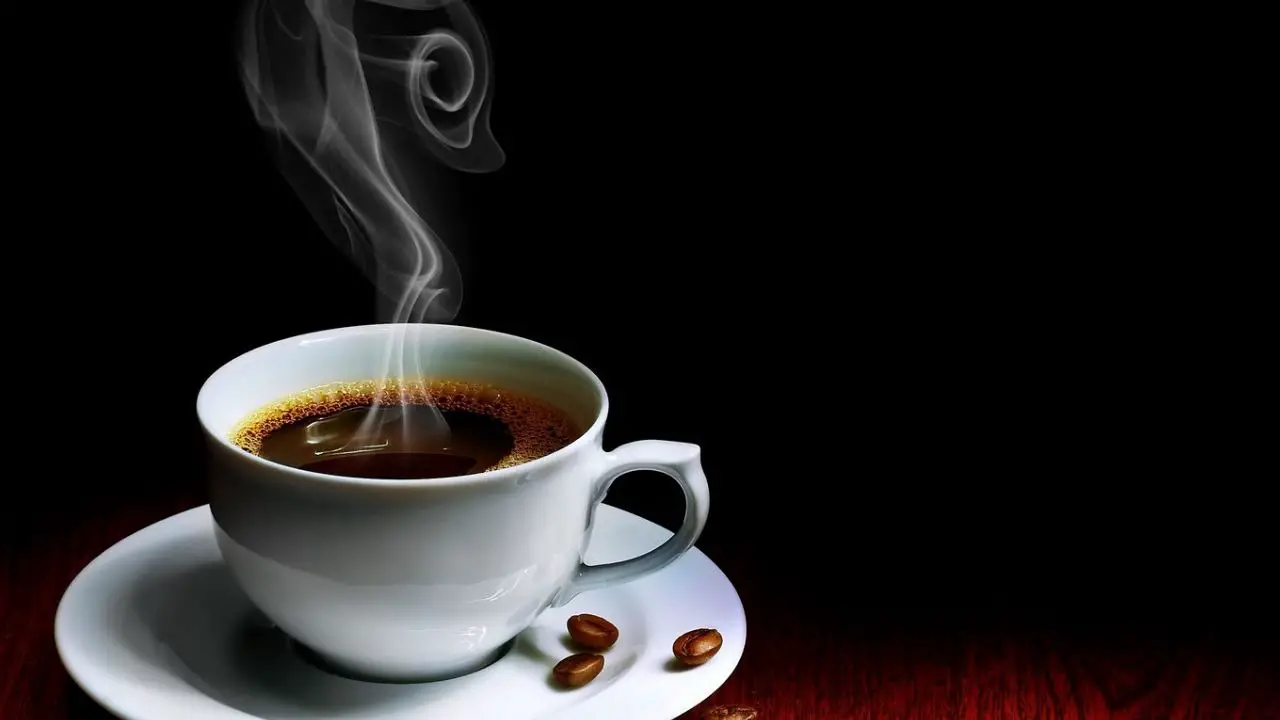How Many Calories in Coffee? Unveil the Truth!

Black coffee contains about 2 calories per 8-ounce cup. Calories increase with added ingredients like sugar and milk.
Coffee is a popular beverage enjoyed by millions daily. Its low-calorie content makes it appealing for those watching their weight. The actual calorie count in coffee can vary based on what you add to it. Black coffee remains the lowest in calories, while additions like cream, sugar, and flavored syrups significantly increase the calorie count.
Knowing the calorie content helps you make informed choices about your daily coffee intake. Whether you’re a casual coffee drinker or a dedicated enthusiast, understanding the nutritional aspects of your coffee can contribute to a healthier lifestyle.
Calories In Coffee: The Basic Facts
Coffee is a popular drink worldwide. Many people enjoy it daily. Knowing the calories in coffee helps manage your diet. This blog section explains the basic facts about coffee calories. Understanding these facts helps make better choices.
Plain Black Coffee Calorie Count
Plain black coffee has very few calories. One cup (8 oz) usually contains about 2 calories. This makes black coffee a low-calorie drink. It is a great option for those counting calories.
Variables Affecting Calorie Content
The calorie content of coffee can change. Adding ingredients like milk, sugar, or cream increases calories. Different types of milk also affect the calorie count. Here is a simple table showing how various additions change coffee’s calories:
| Ingredient | Calories |
|---|---|
| Black Coffee (8 oz) | 2 |
| 1 tsp Sugar | 16 |
| 1 tbsp Whole Milk | 9 |
| 1 tbsp Cream | 52 |
These numbers show how additions affect calories. Choose your coffee ingredients wisely. Avoiding high-calorie additions keeps your coffee low in calories.
Additives And Their Impact On Caloric Intake
Coffee on its own is low in calories. The additives you choose can increase its caloric content. Understanding how these additives impact your coffee can help you make smarter choices.
Sugar And Sweeteners
Adding sugar or sweeteners can quickly increase the calories in your coffee. A single teaspoon of sugar has around 16 calories. If you add two teaspoons, that’s 32 extra calories.
Many people prefer artificial sweeteners. These can be a low-calorie alternative. Here’s a table showing the calories in common sweeteners:
| Sweetener | Calories per Serving |
|---|---|
| White Sugar | 16 |
| Honey | 21 |
| Stevia | 0 |
| Aspartame | 0 |
Cream And Milk Varieties
Cream and milk add both flavor and calories to your coffee. The type of milk or cream you use can make a big difference. Here’s a list showing the calories in different milk and cream types:
- Whole Milk: 18 calories per tablespoon
- Skim Milk: 5 calories per tablespoon
- Half-and-Half: 20 calories per tablespoon
- Heavy Cream: 52 calories per tablespoon
Plant-based milk options can also vary in calories. Almond milk has around 5 calories per tablespoon. Soy milk contains about 10 calories per tablespoon. Oat milk has approximately 15 calories per tablespoon.
Choose your additives wisely to keep your coffee healthy and low-calorie.
Espresso Vs. Drip Coffee: A Calorie Comparison
Coffee lovers often wonder about the calorie content of their favorite brew. Espresso and drip coffee are popular choices, but how do they compare in terms of calories? Let’s dive into the details.
Espresso Basics
Espresso is a concentrated coffee brewed by forcing hot water through finely ground coffee beans. This process creates a rich and intense flavor. A standard shot of espresso is about 1 ounce.
Typically, a single shot of espresso contains about 1 to 2 calories. The calories come mainly from the coffee oils and solids. Espresso is often consumed in small quantities, making it a low-calorie option.
Here’s a quick breakdown:
- Single shot (1 oz): 1-2 calories
- Double shot (2 oz): 2-4 calories
Drip-Brewed Coffee Calorie Analysis
Drip-brewed coffee is made by pouring hot water over ground coffee. The water passes through the coffee grounds and filter, extracting the flavors and oils. This method produces a larger volume of coffee.
A typical 8-ounce cup of drip coffee contains about 2 to 5 calories. The calorie content can vary based on the type of coffee beans and brewing method.
Here’s a detailed comparison:
| Serving Size | Calories |
|---|---|
| Espresso (1 oz) | 1-2 calories |
| Drip Coffee (8 oz) | 2-5 calories |
Both espresso and drip coffee have minimal calories. This makes them great choices for those watching their calorie intake.
Decaf And Calorie Content: What Changes?
Many people enjoy coffee without caffeine. But does this affect its calories? Let’s explore how decaf coffee differs in calorie content from regular coffee.
Decaffeination Process
The decaffeination process removes caffeine from coffee beans. This process involves various methods. Each method has its own steps:
- Solvent-based method: Uses chemicals to remove caffeine.
- Water process: Uses water and filters to decaffeinate.
- CO2 process: Uses carbon dioxide to extract caffeine.
These methods do not add calories. They simply reduce caffeine content.
Comparing Decaf And Regular
Both decaf and regular coffee have similar calorie counts. Here’s a simple comparison:
| Type of Coffee | Calories (per 8 oz) |
|---|---|
| Regular Black Coffee | 2 |
| Decaf Black Coffee | 2 |
As shown in the table, both types of coffee have about 2 calories per cup. The calorie content remains low. The main difference is the caffeine amount.
Adding milk, sugar, or flavors will increase calories. This applies to both decaf and regular coffee.
Popular Coffee Shop Drinks: A Calorie Guide
Coffee lovers often wonder about the calorie content of their favorite drinks. This guide helps you understand the calories in popular coffee shop beverages. Knowing this can help you make healthier choices.
Starbucks Favorites
Starbucks offers a wide range of delicious drinks. Each has a different calorie count. Here are some popular choices:
| Drink | Calories (Tall) |
|---|---|
| Latte | 150 |
| Cappuccino | 80 |
| Caramel Macchiato | 190 |
| Mocha | 290 |
| Flat White | 170 |
Dunkin’ Calorie Counts
Dunkin’ is another popular coffee shop with a variety of drinks. Let’s explore the calorie content of some favorites:
| Drink | Calories (Medium) |
|---|---|
| Hot Coffee | 5 |
| Iced Coffee | 10 |
| Latte | 120 |
| Cappuccino | 80 |
| Mocha Swirl | 350 |
Understanding the calorie content in these drinks helps in making healthier choices. Choose wisely to enjoy your coffee without guilt.
Low-calorie Coffee Options For Weight Watchers
Many people love coffee but worry about calorie intake. Good news for Weight Watchers: coffee itself is shallow in calories! The problem arises with additives like sugar, cream, and flavored syrups. Let’s explore some low-calorie coffee options to help you enjoy your favorite beverage without guilt.
Healthier Additive Choices
Choosing healthier additives can significantly reduce your coffee’s calorie count. Here are some great options:
- Stevia: A natural, zero-calorie sweetener that won’t spike blood sugar.
- Almond Milk: Contains fewer calories than regular milk. Choose unsweetened versions for the best results.
- Cinnamon: Adds flavor without adding calories. Plus, it has health benefits!
- Vanilla Extract: A little goes a long way. Just a few drops can add a lot of flavor.
You can enjoy a delicious coffee without the extra calories by opting for these healthier choices.
Calorie-saving Tips
Follow these tips to keep your coffee low in calories:
- Skip the Whipped Cream: Whipped cream adds unnecessary calories and fat.
- Use a Smaller Cup: Smaller portions mean fewer calories.
- Go Black: Black coffee has almost zero calories. It’s the best option for Weight Watchers.
- Avoid Flavored Syrups: These are often loaded with sugar and calories. Use natural flavors instead.
- Choose Light Options: If you must add milk, choose skim or light versions.
Implementing these tips can help you enjoy your daily coffee while keeping your calorie intake in check. Happy sipping!
Measuring The Impact Of Coffee On Diet
Coffee is a daily ritual for many people. Understanding its calorie content is crucial for those mindful of their diet. Let’s delve into how coffee affects your diet and metabolism.
Calories Vs. Metabolism
Plain black coffee contains almost no calories. One cup has only about 2 calories. Adding milk, sugar, or cream increases the calorie count. A tablespoon of cream adds 52 calories. A teaspoon of sugar adds 16 calories.
Here’s a simple table to illustrate:
| Ingredient | Calories |
|---|---|
| Black Coffee (1 cup) | 2 |
| 1 tbsp Cream | 52 |
| 1 tsp Sugar | 16 |
Coffee can boost your metabolism. It contains caffeine, a natural stimulant. This can increase your energy expenditure. Studies show it can boost your metabolic rate by 3-11%.
Coffee In A Balanced Diet
Moderation is key to including coffee in a balanced diet. Too much caffeine can lead to jitteriness and sleep problems. A healthy diet includes various food groups. Coffee should not replace meals or snacks.
- Drink plain black coffee to keep calorie intake low.
- Add minimal sugar or cream to control extra calories.
- Pair coffee with a balanced breakfast for a good start to the day.
Here are some tips for a balanced coffee habit:
- Limit coffee to 2-3 cups a day.
- Choose low-fat milk instead of cream.
- Use natural sweeteners like honey.
Remember, coffee can be part of a healthy diet. Just be mindful of what you add to it.
Myths And Realities: Coffee’s Caloric Misconceptions
Many people think coffee is calorie-free, but this isn’t always true. Coffee’s calorie content can vary based on what you add to it. Let’s explore common myths and truths about coffee and calories.
‘calorie-free’ Claims
Many believe black coffee has no calories. Plain black coffee indeed has very few calories, typically around 2 calories per cup. This makes it a low-calorie drink choice.
But adding cream, sugar, or flavored syrups changes this. For instance, one tablespoon of cream adds about 50 calories. A single teaspoon of sugar adds 16 calories. This means your cup of coffee can quickly become a high-calorie beverage.
| Ingredient | Calories |
|---|---|
| Black Coffee (1 cup) | 2 |
| 1 tbsp Cream | 50 |
| 1 tsp Sugar | 16 |
| Flavored Syrups (1 pump) | 20 |
The Truth About Coffee And Appetite
Many think coffee suppresses appetite. This isn’t entirely true. While caffeine can reduce hunger for a short time, it is not a long-term solution.
Drinking coffee may make you feel full temporarily. This effect is due to caffeine stimulating your central nervous system. But relying on coffee to control your appetite can lead to overeating later.
It’s better to maintain a balanced diet. Coffee should complement your meals, not replace them. Focus on whole foods and healthy snacks to manage hunger effectively.
Preparing Coffee At Home: Control Your Calorie Count
Preparing coffee at home lets you control your calorie count. You can choose the ingredients and monitor portions to keep your drink healthy. Understanding how to make your coffee can help you enjoy a guilt-free cup.
Diy Coffee Brewing
Brewing coffee at home can be simple and enjoyable. You need basic equipment like a coffee maker, grinder, and fresh beans. Here are some steps to brew your coffee:
- Choose your favorite coffee beans.
- Grind the beans to your preferred coarseness.
- Measure the coffee and water ratio.
- Start the brewing process.
- Pour your freshly brewed coffee.
This method ensures you know exactly what goes into your cup.
Monitoring Additive Portions
Adding sugar, cream, or milk can increase your coffee’s calorie count. Monitoring portions helps you keep your drink healthier. Here’s how:
| Additive | Calories per Serving |
|---|---|
| Sugar (1 tsp) | 16 |
| Whole Milk (1 tbsp) | 9 |
| Heavy Cream (1 tbsp) | 52 |
Using alternatives like almond milk or stevia can reduce calories. Always measure your additives to stay within your calorie goals.
By preparing coffee at home, you control your calorie intake. Enjoy a delicious and healthy cup every day.
The Final Verdict: Is Coffee A Diet Friend Or Foe?
Coffee is a staple in many people’s daily routines. But is it good for your diet? Let’s explore the impact of coffee on calorie intake and see if it helps or hinders your diet goals.
Summarizing Coffee’s Caloric Impact
Black coffee is very low in calories. One 8-ounce cup has about 2 calories. This makes it a great choice for dieters.
Many coffee drinks can add extra calories. For example, a latte with whole milk and sugar can have up to 200 calories. This is a big difference compared to black coffee.
Here’s a table that shows the calories in different types of coffee drinks:
| Type of Coffee | Calories (per 8 oz) |
|---|---|
| Black Coffee | 2 |
| Latte (Whole Milk) | 150 |
| Cappuccino | 80 |
| Mocha | 190 |
| Frappuccino | 300 |
Making Smart Coffee Choices
To keep your coffee low in calories, follow these tips:
- Choose black coffee or add a splash of milk.
- Avoid sugar and use stevia or a sugar substitute.
- Skip whipped cream and flavored syrups.
- Use skim milk instead of whole milk or cream.
By making smart choices, you can enjoy coffee without harming your diet. Always check the ingredients in your coffee drinks. This way, you can keep track of your calorie intake.
Frequently Asked Questions
How Many Calories Are In A Cup Of Coffee?
A cup of black coffee typically contains only 2 calories. Adding sugar, milk, or cream increases the calorie count.
Are There Calories In Black Coffee?
Yes, black coffee has very few calories. A typical 8-ounce cup contains about 2 calories. It is a low-calorie beverage.
Is All Black Coffee 0 Calories?
Yes, plain black coffee typically has zero calories. It contains only water and coffee without added sugars or cream.
How Many Calories Are In A Coffee With Milk?
A coffee with milk typically contains 30 to 60 calories, depending on the type and amount of milk used.
How Many Calories In Black Coffee?
Black coffee contains approximately 2 calories per 8-ounce cup.
Does Adding Sugar Increase Coffee Calories?
Yes, adding sugar significantly increases the calorie content of your coffee.
How Many Calories In Coffee With Milk?
Coffee with milk can have 30-60 calories per cup, depending on the type and amount of milk used.
How Many Calories In A Latte?
A typical latte contains about 120-250 calories, depending on the milk and flavorings added.
Conclusion
Understanding the calorie content in your coffee helps you make healthier choices. Black coffee is low in calories. Adding sugar, milk, or cream increases the count. Be mindful of your additions for a balanced diet. Enjoy your coffee while keeping an eye on those extra calories!

:max_bytes(150000):strip_icc()/black-coffee_annotated-dc9e981c8fec4d5a9ba5ad5887d06d57.jpg)












